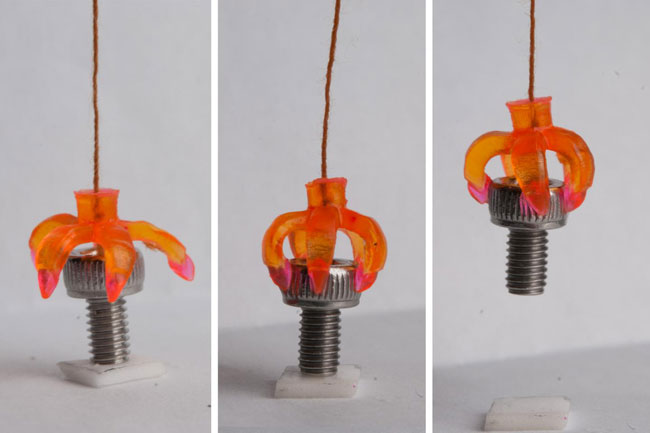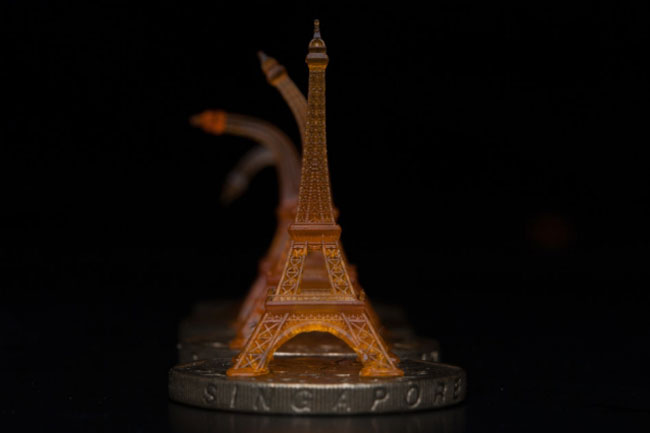CAMBRIDGE, Mass., Sept. 23, 2016 — A high-resolution 3D printing process that uses light from a projector to print patterns on shape-memory polymers (SMPs) was used to fabricate structures that can morph back to their original shape quickly. The process, called microstereolithography, could be useful for creating structures for a variety of applications, from biomedical devices to photovoltaic solar cells.

In this series, a 3D printed multimaterial shape-memory minigripper, consisting of shape-memory hinges and adaptive touching tips, grasps a screw. Courtesy of Qi (Kevin) Ge.
Researchers at Massachusetts Institute of Technology (MIT) and Singapore University of Technology and Design (SUTD) developed the process, which uses UV light to print successive layers of polymers into 3D structures.
"We're printing with light, layer by layer," said professor Nicholas X. Fang. "It's almost like how dentists form replicas of teeth and fill cavities, except that we're doing it with high-resolution lenses that come from the semiconductor industry, which give us intricate parts, with dimensions comparable to the diameter of a human hair."
Conventional 3D printers can design structures with details only as small as a few millimeters. This size restriction has limited how quickly a structure can recover its original shape.
“The reality is that, if you’re able to make it to much smaller dimensions, these materials can actually respond very quickly, within seconds,” said Fang. “For example, a flower can release pollen in milliseconds. It can only do that because its actuation mechanisms are at the micron scale.”
Researchers created a computer-aided design (CAD) model; divided it into hundreds of 2D images, and transmitted the images individually through a digital micro display which worked as a dynamic photo-mask. UV light produced from a LED array was spatially modulated with the patterns of the corresponding 2D images, and illuminated onto the surface of the photo-curable polymer solution.
Once the material in the exposed area was solidified to form a layer, the substrate on which the fabricated structure rested was lowered by a translational stage, followed by projection of the next image to polymerize a new layer on top of the preceding one.

This process proceeded iteratively until the entire structure was fabricated. The projection area was about 3.2 × 2.4 cm, resulting in a pixel size of ∼30 × 30 μm. According to the research team, the lateral resolution could be further improved up to as high as ∼1 μm if a projection lens with high optical magnification was used. This step-and-repeat method could be employed to extend the printing area without compromising lateral resolution.

A shape-memory Eiffel tower was 3D-printed using projection microstereolithography. It is shown recovering from being bent, after toughening on a heated Singapore dollar coin. Courtesy of Qi (Kevin) Ge.
The researchers used a family of photo-curable methacrylate-based polymers to create the shape-memory material on which to print their light patterns. They printed a variety of structures and found that the structures could be stretched to three times their original length without breaking and snapped back to their original shapes within seconds when exposed to heat within the range of 40 to 180 °C.
"Because we're using our own printers that offer much smaller pixel size, we're seeing much faster response, on the order of seconds," said Fang. "If we can push to even smaller dimensions, we may also be able to push their response time, to milliseconds."
High-resolution shape-memory polymers that can predictably morph in response to temperature have many potential applications, from soft actuators that turn solar panels toward the sun to tiny drug capsules that open upon early signs of infection.
The research was published in Scientific Reports (doi:10.1038/srep31110).